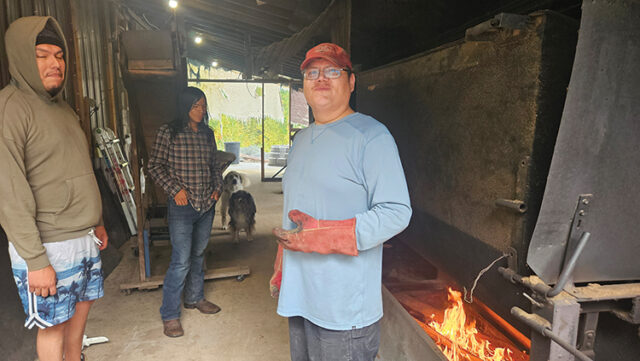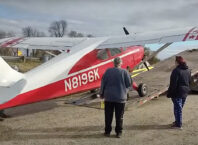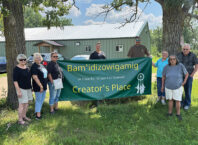By Winona LaDuke
Giiwewag. They are coming home. Manoominikwewag — harvesting wild rice is a deep connection back to water and land. The Anishinaabe have harvested wild rice for a thousand years on the same lakes. That’s a land-based economy, not an economy based on profit margins of foreign corporations. It’s worth fighting for.
I came off ricing Height of Land and the Otter Tail River, places well frequented by my ancestors and ricers today. A couple of younger people followed my grandson, Aandegoons Neeland, and me out on the lake. It was their first time ricing ever, and they were happy. They had come up from the Twin Cities, and it was indeed a homecoming.
A bit later, I met a trio at the gas station. Old family names — Villibrun and Boswell — now from the Twin Cities.
“I used to rice as a child,” Boswell said. “I used to sit by the side of the lake and watch my parents rice. I was three then. The first time I actually riced was this year — and I’m 53.”
I asked him, “How did it make you feel?” He nodded. “Happy.”
For the Anishinaabeg, the wild rice season is one of the most important for food, for income, and for homecoming. And this year, with the tribes buying hundreds of thousands of pounds of green rice at a good price, there are lots of ricers.
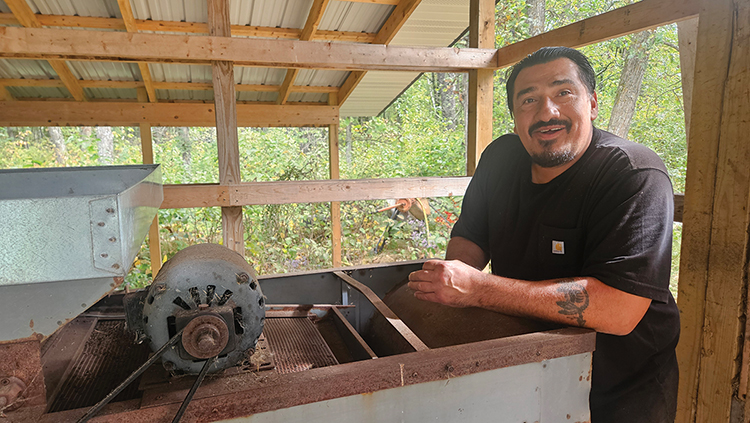
This is the only place in the world where wild rice grows. Wisconsin has about 5,000 acres of wild rice, and the lakes were closed down early this year. The stronghold of manoomin in Wisconsin is the Kakagan Sloughs on Bad River, and from all accounts, it was a good year there.
But it’s really here, omaa akiing. The strongholds of Nature’s Lake up on the Leech Lake Reservation, the Sandy Lake Flowage, Dean Lake, Rice Lake Refuge, and Minnewawa are all big lakes for the wild rice harvest. Minnesota has 64,000 acres of wild rice; Manitoba and Ontario are also rich with manoomin. White Earth Reservation itself, with 47 lakes and 500 bodies of water, includes Shell Lake, Mitchell Dam, Flat Lake (which always provide), Basswood Lake, and then the mother lode — Lower Rice Lake — which had 200 or more boats on it on opening day.
Wild rice is the mark of wealth, happiness, and independence. The Anishinaabe food security was tied to wild rice, and that has not been stolen. There’s a lot of joy, dust, and jokes at the rice mills. Some families still hand-parch in kettles in the yard, but most are taking the manoomin to get parched because it’s not simple — equipment, heat, river rice versus lake rice, and more.
Gaapizigewag. They are parching wild rice.
The parchers of White Earth are a proud bunch. They are the descendants or students of some of the great parchers who are now in the Spirit World — Sunfish Oppegard, Donavon Vizenor, Russel Warren, Dave Annette, Dale Greene, and more. This is a fine art.
Jon Martin may be the youngest of the parchers on White Earth. He’s headed toward 38 and is parching at the Akiing rice mill on Round Lake. He was taught by Ron Chilton and is using equipment purchased from some of the old guard — Sanborn from McGregor and Gregwaire from MaKoonce. Jon has been parching for about ten years, but it’s in his lineage: Jon is the grandson of Darwin and Dorothy Stevens of Rice Lake. When we had the Rice Chiefs, Darwin was one. (The Good Life) This year, Jon processed about 6,000 pounds of manoomin, along with his nephew Aandegoons Neeland. That had to make those ancestors proud.
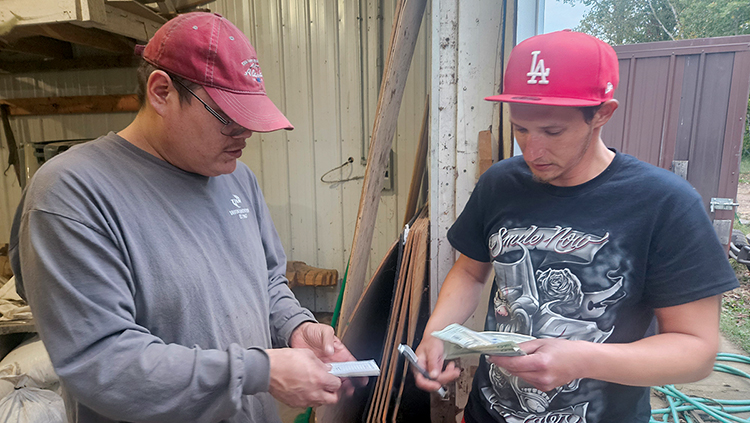
Brian Buck parches over by Mahnomen. Brian’s grandfather Donavon Vizenor worked with Louis DeWandler at the mill on the Ponsford Prairie. “My grandpa was the one who taught Louis DeWandler how to parch. They parched together for 20-some years…” That’s where Brian learned to parch. “I have two 500-pound parchers, and this year we did 22,000 pounds of green rice,” he tells me.
He continues, “I parched about 7,000 pounds from the tribe, and the rest was private or custom wild rice for individuals.” Some of those folks came from as far away as Rochester and Pine River to get their rice parched. “I’m glad to keep parching rice, something my grandpa started years ago.” Brian Buck fashioned his own parchers and a thresher, illustrating some of the local mechanical genius. It’s custom equipment, and every mill has specifics. And vintage is classic: “One of the scales we used to weigh the rice on was my great-grandfather’s, Delmas Vizenor. And it’s still on the money. I had Minnesota Weights and Measures come out and check my scale… and they were right.”
Ernie Bloom processes wild rice by Pine Point Village. Using equipment that came originally from Dave Annette and Sunfish Oppegard, he’s been parching for a couple of years but comes, like most of the community, from generations of ricers.
The largest rice mill on the reservation today is the DeWandler Mill on the Ponsford Prairie. “It’s time when the first acorns fall on the roof. That’s the time of wild rice. The time when the plums are ripe,” Rich DeWandler tells me. I spent an hour or so sitting in the DeWandler wild rice mill — another intergenerational family tradition. Aaron DeWandler is throwing big logs into the huge parchers. Rice parching is not for the lazy, that’s for sure. Over forty years, the DeWandlers, along with Donavon Vizenor, built the mill, expanded it, and reworked everything until it was perfect.
It’s a good smell in the rice mill. Parched rice is sort of like the smell of freshly baked bread, except it has the lake smell still on it, if it’s good. There’s a lot of nuance in rice parching — sounds, smells, fire, tinkering with machines endlessly. Rice parches out at 30–50% usually (green to finished), and there are a lot of variables. The mill is the place where ricers meet parchers, stories are told, and tens of thousands of pounds of freshly harvested Ojibwe gold turn into something we can eat and cherish — manoomin.
In 2024, the White Earth Tribe, with possibly the largest wild rice holdings of any tribe, harvested about 240,000 pounds of rice. Some small Native businesses and community members also sell wild rice throughout the year. This year the tribe will purchase maybe 300,000 pounds. There’s no question that the ricers and local businesses will be happy with the sales, and the community will have access to the plant that has sustained us for a thousand years.
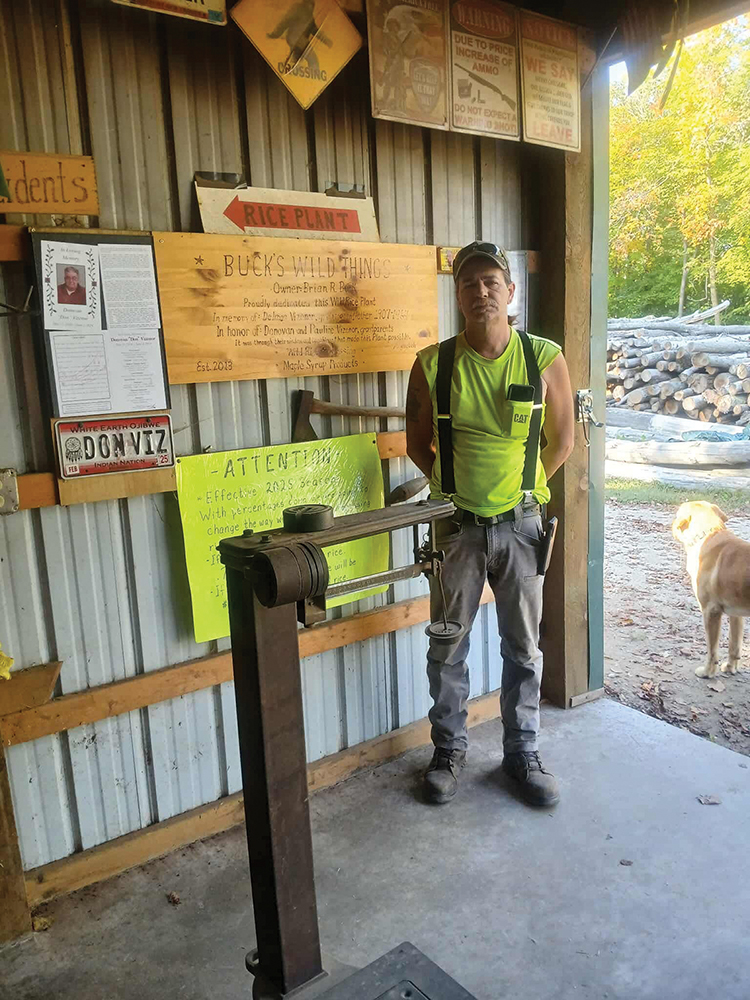
The Anishinaabe fought hard to keep our wild rice because of its value spiritually and in terms of food security. Proposals for dam projects, mines, and pipelines, as well as the University of Minnesota’s genetic engineering trials of wild rice, have met with resistance from people who continue a way of life. Indeed, it’s not only the rice itself — it’s also the name: manoomin, or wild rice. In the 1980s, Mike Swan and Frank Bibeau, two White Earth enrollees, filed a lawsuit against Anheuser-Busch, which was marketing something called Onamia Wild Rice. The label had two Indians and a canoe on it, and it was pure paddy rice from California.
Waabizi v. Anheuser-Busch challenged the misrepresentation on the label. The rice and the Anishinaabe won — now there’s a labeling law that must acknowledge lake rice over paddy wild rice. That law, however, is only in Minnesota, and still 75% of the wild rice sold on U.S. markets comes from diked rice paddies, mostly in California. In 2020, White Earth and the 1855 Treaty Authority declared the Rights of Wild Rice, putting tribal regulations in place to enforce and protect the ability of wild rice to continue to exist and flourish.
Today, wild rice faces challenges from big foreign mining corporations that want to mine in wild rice lake areas. In 2024, the MPCA listed 55 wild rice waters as impaired due to sulfate, and that is too many. The key question now is whether sulfate will be reduced.
In this time of endless greed, self-serving individuals and big foreign corporations are lobbying to bend the sulfate rules so they can get rich, making the wild rice, tribes, and people of Minnesota pay for their profits. New Range Copper Nickel (formerly PolyMet) is a combination of Swiss and Canadian mining interests and is proposing an open-pit copper-nickel mine. Twin Metals Minnesota, a subsidiary of the Chilean company Antofagasta, wants to mine the Boundary Waters, a stronghold of the most pristine water in the world.
Talon Metals, owned by a group of foreign investors and partnered with Rio Tinto Zinc, a notorious British mining corporation, wants to open a big mine near Sandy Lake and Minnewawa, two rice strongholds. And in June 2025, Japanese Nippon Steel acquired U.S. Steel for $14.9 billion. These corporations talk about jobs, but not about water and pollution. It’s a bit like the Avatar quest for “unobtainium”: endless greed and destruction for money. None of those foreign corporations care about our manoomin.
Back here on White Earth, there are no mining corporations — but there is agribusiness taking our water, forest clear-cutting, and more. Yet the rice is still here — it has been for centuries. So long as the Anishinaabe people respect and protect our wild rice, our manoomin, we will be able to care for our people. And so long as we remember how to parch, we will eat.


